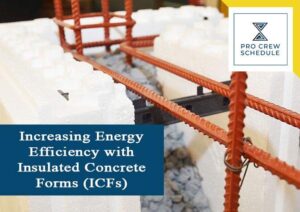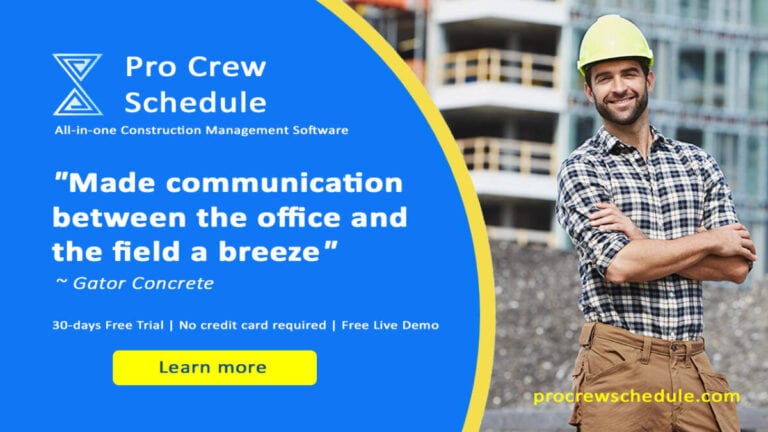Energy-efficiency is specifically crucial in commercial buildings because it is accountable for almost 20% of total energy use in the United States. Today, Insulated Concrete Forms (ICFs) are becoming a more common method to construct commercial buildings because of their energy-efficiency and high strength. Commercial low-rise buildings are some typical applications of ICFs.
Today, ICFs is one of the most durable and energy-efficient wall systems for commercial construction. Contractors prefer to use this construction method because of its energy credit and other rating types, LEED or WELL as a primary example. More and more architects, contractors, and commercial building owners recognize the many benefits of ICF.
For this blog, let’s find out how beneficial ICFs are, particularly for commercial construction.
Overview of Insulated Concrete Forms
ICF is a system of expanded EPS (polystyrene) rigid insulation blocks commonly separated with plastic webbing. The forms are utilized as an integrated concrete form whenever pouring a concrete wall, instead of old-style plywood forms or wood plank. ICF blocks come in interlocking sections, making a wall system fits tightly together.
ICFs typically undertake the place of wood, concrete, or masonry. It provides:
- A continuous sound barrier and insulation and backing for drywall from inside.
- Stucco.
- Brick on the outside.
- Even lap siding.
ICFs are found primarily in new construction and not in any retrofitting projects. They are easier to install and have many advantages.
Some benefits of using ICFs include the following:
1. Better Sound/Acoustic
If the sound and voices from conference rooms are heard from the other rooms, the building isn’t probably constructed using insulated concrete forms. As the name implies, ICFs provide a tremendous amount of insulation from temperatures and sounds. No more sound is going to leak from the other rooms when the commercial buildings are constructed with insulated concrete forms.
ICF construction is unique and will prevent the transmission of sound and loud voices through the walls. In addition to being unique, ICFs are highly sound absorptive. The material eliminates sound and echo reflection that typically occurs within the room itself.
2. Reduces Waste and Emissions
ICFs are lightweight, hollow forms commonly manufactured using high-density expanded polystyrene panels. These panels are connected and distinctively designed, with one hundred percent recycled polypropylene webs. Thus, making those blocks sixty percent recycled material by overall weight. Furthermore, ICFs minimize waste and take note that any waste usually produced is one hundred percent recyclable. They utilize fewer natural resources like gas, wood, and electricity. Reducing waste is a critical factor for green building construction.
In fact, insulated concrete forms typically generate as little as one percent of construction waste. Hence, it greatly minimizes landfilling that naturally produces methane emissions. Moreover, IFCs are manufactured without the utilization of HCFCs, CFCs, or other chemicals. ICF construction is proven to be environmentally and eco-friendly, helping in conserving trees too.
Yet, during construction, these forms are being stacked, braced and will be filled with concrete. The end product can be recycled and creates a cradle to the grave type of product. The steel reinforcement used for ICF forms can be made from ninety-none percent recycled materials. As a result, it makes the overall use of ICFs a highly sustainable process.
3. Improves Building Strength
You must be aware that buildings, both commercial and residential, especially those constructed with ICFs, are six to none stronger than a typical building. Additionally, ICF construction can securely protect all properties from any natural disasters because the forms can withstand 402 KPH winds. Hence, some of the worst natural disasters like earthquakes, fires, severe storms, flooding, and tornados will not damage any properly installed ICF buildings.
ICFs construction strongly contributes to building safer workplaces and communities. And throughout the building’s lifecycle, ICF construction results in resilient and durable structures. Clearly, ICFs provide countless advantages that last for the years to come. Other benefits of ICF construction includes:
- Follow similar code regulations as traditional concrete walls.
- Builders achieve easy and fast construction with ICFs, thus, reducing working schedules. For more efficient project management, contractors can use subcontractor scheduling software.
- It can be designed for buildings over forty feet tall.
- · Energy efficiency, resulting in cost savings.
- It has more excellent insulation (R-17 to R-26) in comparison with R-9 (wood-frame structures). Therefore, less energy is required to cool and heat building interiors.
- Resistant to mildew, mold, weather, and insects.
- · High strength and greater moisture barrier and sound resistance
- Forms can be directly cut by builders using routers or electric hit knives.
- · Lightweight, allowing easier transportation and shipping
- Walls offer tightness for air, specifically if paired with compatible doors, windows, and roofs.
- No vapor barrier is required because of ICFs act as a regular moisture barrier.
- Compatibility with different carpenter trades. It is the project manager’s responsibility to use construction techs to manage better and supervise various trades.
ICF construction may not easily conform to structural requirements being set by standard code, but it’s capable of offering safety, sound insulation and energy savings. Therefore, often the best solutions to apply are the simplest ones, with various characteristics and features meeting a wide range of expectations. The same construction techniques apply to both high-rise commercial projects and residential ICF dwellings.
Sustainability and Energy Efficiency Starts with ICFs
ICFs’ main appeal is the potential energy savings that directly come from minimizing the amount of energy required to cool and heat the buildings. Those savings can add up to twenty percent or more. The typical R-value for any building made with the use of ICFs is about twenty. Hence, during its service life, a single building can save vast amounts of CO2 compared to others.
Apparently, other sustainable construction techniques must be implemented when managing construction projects, including commercial dampers in the commercial buildings, below-grade insulation and solar panels. Combine all of these strategies and techniques, all your client’s monthly energy/electricity bill will be next to nothing.
Actually, ICF construction has two main advantages when it comes to the energy performance of the building.
Primarily, it seals and covers well enough where air leakage is prevented.
Second, it has two even layers of insulation, one from the inside and one from the outside.
Take note that there’s no thermal bridges. Hence, the tight building envelope gradually reduces heat loss. If you are going to construct net-zero energy-efficient buildings, make sure to pay attention to the wall systems. These areas are where ICFs should be best placed. The lack of thermal bridges and airtightness will do wonders for the overall energy efficiency.
Using an online project management software like Pro Crew Schedule is also crucial for a builder like you. Building construction is not for unskilled and impractical individuals. Only this software application makes work easier for you and your crew. Check Pro Crew Schedule and enjoy a FREE live demo.
Is ICF Construction Cheaper or Expensive?
If you decide to utilize Insulated Construction Forms for your next construction projects, ensure that you will bump up your actual estimate by five percent compared to standard wood framing units. In order to suggest your client as you promote this idea, make sure to highlight and clarify that the energy savings acquired within the product lifespan will offset the higher upfront costs when using ICFs.
Insulated concrete forms can cost about $150 dollars per square foot. It is two percent to seven percent more than ordinary wood-frame construction. Do keep in mind that the costs of concrete may fluctuate. The price of your client’s building may depend on the local construction labor costs, design, and additional factors.
The majority of your clients who are commercial building owners can save money with ICFs construction during and even after the building process.
- ICF is easy and fast to install, can save more money and time. It is an all-in-one wall assembly that typically combines five construction steps into one, including insulation, structure, vapor retarder, attachment and air barrier.
- ICF construction tremendously accelerated project delivery by disregarding the need for repair and regular maintenance: no repair or maintenance, fewer expenses.
- ICF commercial buildings’ durability and sustainability to stand up to strong wind can save any builder owner the costly expenses of rebuilding and repair after that severe storm.
- ICF commercial buildings are highly energy-efficient, saving your clients a lot of money.
Furthermore, builders and contractors need to invest in the best industry trends today. An advanced tool for project management for construction improves every phase of the project, resulting in outstanding results. Pro Crew Schedule today’s one of the best options for construction project management tools.
Key Takeaways
Energy consumption might be regulated by code, but it is gradually driven by client demand ever since then. With the increasing costs of utilities, efficiency goals are surfacing as a fundamental green building design guideline. Hence, additional sustainability parameters and defense against natural disasters demand even higher and stricter requirements for building envelope’s design. Only one technology has emerged to meet the market demands in commercial construction, and it is none other than insulated concrete forms (ICFs).







